Spotlight on Ramin Rahimian
Sep 29, 2014

TID:
Thanks for being open to this, Ramin. This image is intense and tugs at your heart. Can you tell us a little of the backstory of this image?
RAMIN:
Thank you for asking me to do this. I’m really glad you picked this image. It’s one of the strongest images from my story on Diyar, a young Iraqi who was horribly hurt while working for the US military in Iraq. My story focused on Diyar assimilating to his new life in Salt Lake City and dealing with losing both his legs and maiming an arm. In this image, Diyar waits in a hospital intake room after being taken there in an ambulance from a physical rehab center. He was suffering from severe chest pain as a complication of his antibotic medication. For Diyar, it was the third time in two days that he was taken to the hospital, fearing the worst and in great pain as a result of his medication.
The previous hospital visit ended with Diyar angrily demanding to be take back to his apartment. This image shows Diyar not only in great pain, but also in an exasperated state. His body language combined with that austere room convey the depression and frustration Diyar was feeling. We were in that room for at least an hour with no real progress. At this point, I had been there with Diyar through most of his highs and lows for three months and I was feeling it, too. I would say this image was driven very much so by my anger at what he had been through and what he was dealing with at that moment.
TID:
This is part of a larger project, can you talk a little more broadly about the project (why you’re doing this, what was your motivation)?
RAMIN:
Yes, this is from a documentary story I worked on in Salt Lake City for most of 2009. I first met Diyar through an assignment I had from the Denver Post. Tim Rasmussen at the Post at contacted me to shoot it as part of my Eddie Adams assignment prize. Anyway, I shot Diyar first in May for this assignment. I decided that his story was so moving and extraordinary that I should stick with it beyond the assignment. I wanted to show people the far reaching effects of the war. It was important for me to tell the story of a young man who, though not an American, gave so much of himself and of his life for Americans and their government.
Every aspect of what happened to him and how he was being treated in Utah, angered and disappointed me. He was a handsome and bright young man and it was all just a waste and a shame. I walked away from my first shoot with Diyar, totally blown away that someone in his low 20s, who had been through as much as Diyar did, had such a bright outlook on his life and future. I would have thrown in the towel and given up. Just thinking about it now is making me emotional because it is so hard to convey the pain he went through.
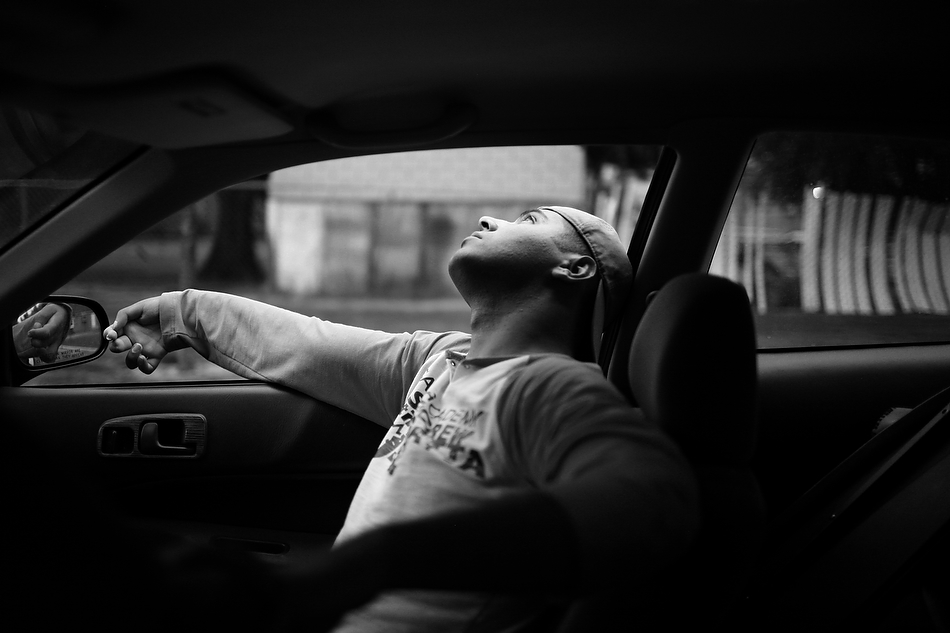
In the early morning of October 20, 2006, six days before his 21st birthday, the Humvee Diayr was riding in during a routine patrol came under attack by a roadside bomb and an ambush. On his last mission and his last hour as a translator before moving to Kuwait for a safer translating job, Diyar lost both of his legs and had his right arm horribly maimed. On April 11, 2008, after a year and half of recovery and over 70 surgeries in Baghdad and Amman, Jordan, Diyar arrived in Salt Lake City as a refugee. He spent his days waking up late (if he slept at all), barely eating, running errands, taken around to different medical appointments, watching movies, and using the Internet to talk with friends and family. Despite Diyar’s intense drive, intelligence, self-reliance, and positive attitude about his new life, he could never go back home and his life would never be normal. I followed him as he navigated through dealing with the US government and L3, the US contractor that had hired him. He was in Utah with no family and no substantial support network to get his life together. In September of 2011, Diyar passed away from an overdose of pain medication in his wheelchair alone in his Salt Lake City apartment.
TID:
How did you approach this story in ways, perhaps, that were different than other bodies of work?
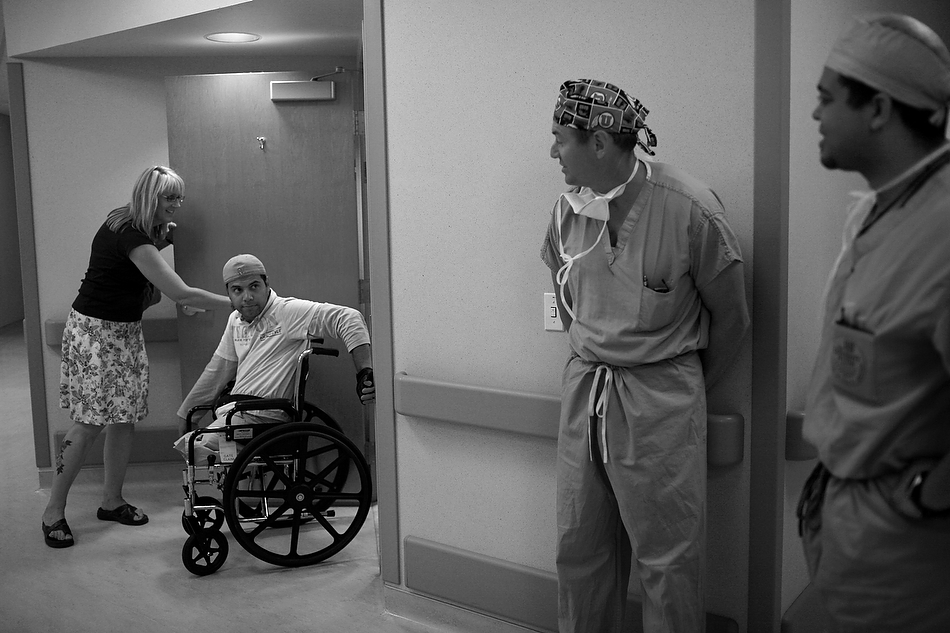
RAMIN:
For starters, this was the closest longterm story I have worked on. I was a 30 minute drive away from him, so shooting whenever it was needed was possible. For instance, in the image that we are discussing, I believe he or his social worker called me and I rushed down to meet him in the hospital. I was able to be there for key moments. This story was different too in the way that I have never been so emotionally close to a person I have photographed. I considered him a friend and I think he thought of me as a friend. He began to depend on me in a way as he saw how anemic the support system was near him. I gave him rides sometimes to the grocery store or to appointments. I cried with him and for him. I have never spent so much time on a story not taking photographs.
TID:
What challenges did you encounter while working to making these images, especially at the beginning?
RAMIN:
Challenges that I encounter included a small language barrier and Diyar’s unreliabilty when it came to setting up shoots with me. I don’t know if it was a cultural thing, but plans that were made between us seemed set in stone but were often broken by Diyar for one reason or another. Things that I saw as crucial in telling his story, Diyar saw as trivial and inconsequential. A good example would be him promising me he would contact me when he was going to attend any type of gatherings with members of the Iraqi community. I expressed the importance of me photographing this and he seemed to understand and was earnest. In retrospect, I don’t think he wanted me to shoot this, but he did not want to upset or offend me by saying so. It’s a cultural thing. He’s not going to come out and say that I can’t come. He just won’t call me. This was tough to deal with because I’m a planner and someone who always wants people to keep their promises.
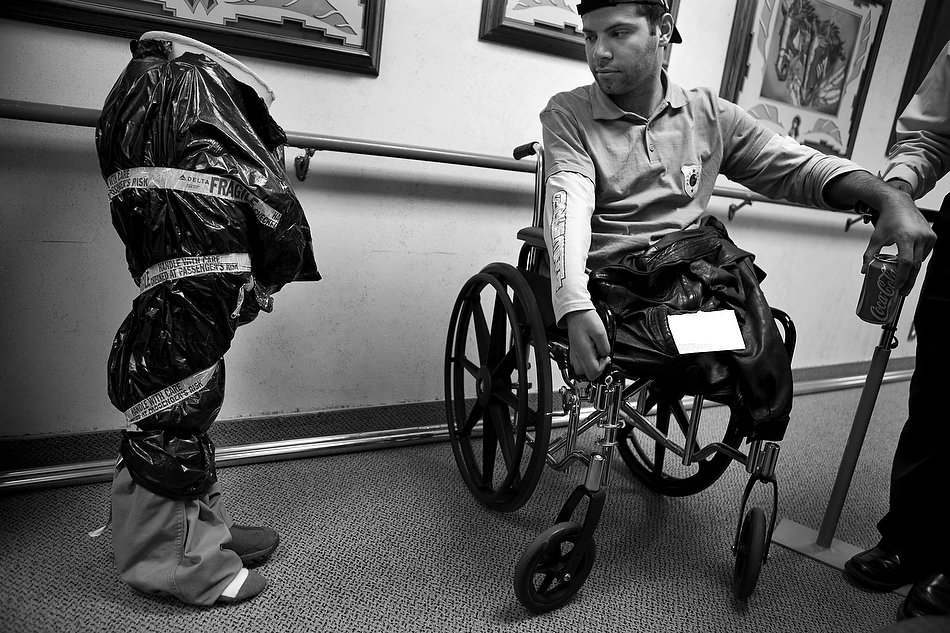
TID:
How did you handle and overcome these problems?
RAMIN:
I handled these problems by eventually backing off my requests for photographs with the greater Iraqi community. I came to terms with just focusing in real tight on his struggle and daily life. I also became accustomed to having our plans canceled or changed. It was tough but I had to. As a photographer, you have to constantly be adjusting your actions and decision-making process to fit with what is before you. This is true not only for when you are photographing, but for when you are dealing with the personality and wishes of the people you are photographing.
TID:
What surprised you about the image? What has surprised you about the making of the series?
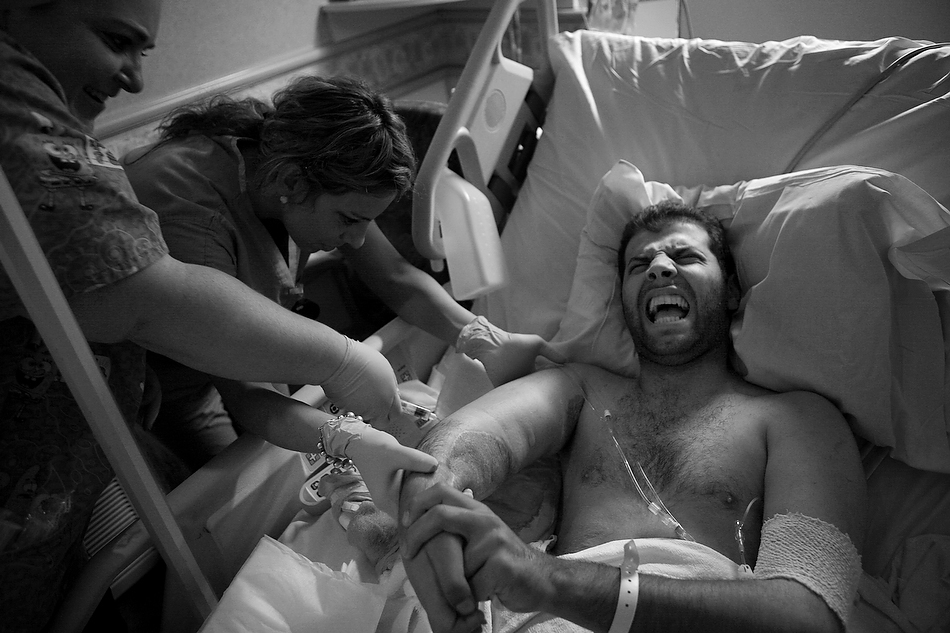
RAMIN:
What surprised me was the room he was placed in, to be honest. What surprised me was how long he had to wait for any real help or sign that he was OK. What surprised me was with the lack of warmth the hospital showed him. Throughout the project, I was surprised and amazed, like I said before, by his strength and optimism. He was proud and self-reliant. I was surprised that the non-Iraqi and Iraqi community in Salt Lake City did not step in and help him more.
TID:
Now, onto the moment. Can you tell us specifically what was going on both here and in your mind leading up to the picture?
RAMIN:
So Diyar was placed in this depressing room for a good hour just to see a doctor to tell him why he was having such severe chest pains. He was a little paranoid and very worried that he was having major issues. It scared me a bit because he had at this point already been through dozens and dozens of surgeries and so much more. So, seeing him in such pain and seeing him so helpless worried me. That bare room is something I won’t forget. With this image, I was trying to show the emptiness but also a sense of pain, exhaustion, and futility. I, also, did not want to be in there.
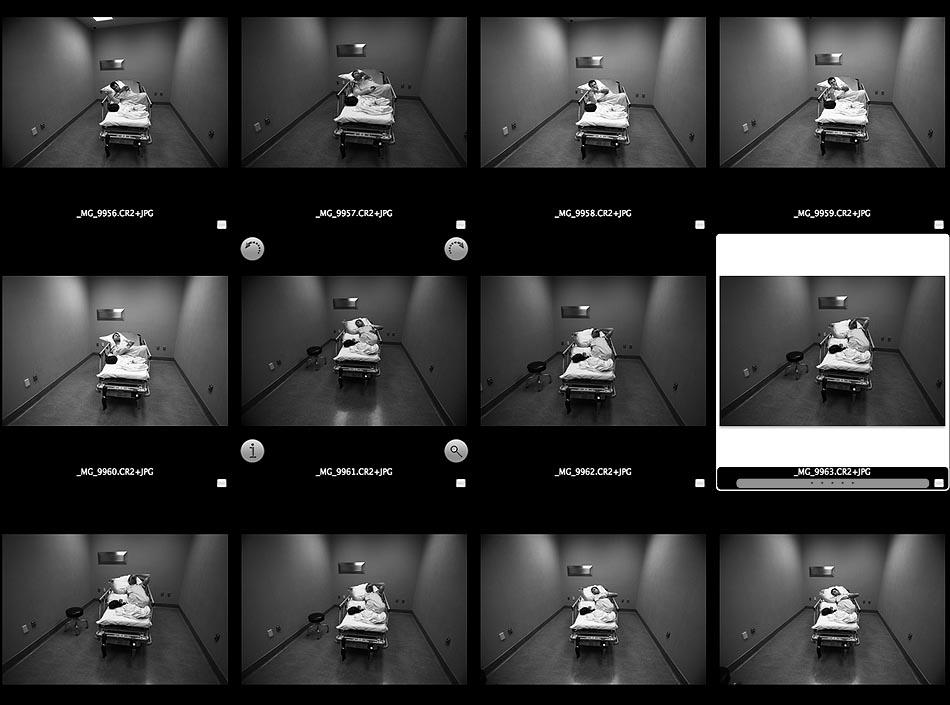
TID:
What have you learned about yourself in the process of making images like this (how has your life been changed?)
RAMIN:
I have learned that besides telling a story, I seek to work on longterm projects as a way to live and experience differently. It’s important for me to take myself out what I am used to every now and then. The time with Diyar along with the time spent working on my other projects, are pieces now of my life. I value that. This scene was so intense for me that it forced me to be much more patient than I normally am. I knew what I wanted to capture from that scene and I forced myself (and we were kind of stuck in that space) to wait for it. I would say that when it comes to moments such as this, I am now more patient.
TID:
What have you learned about others?
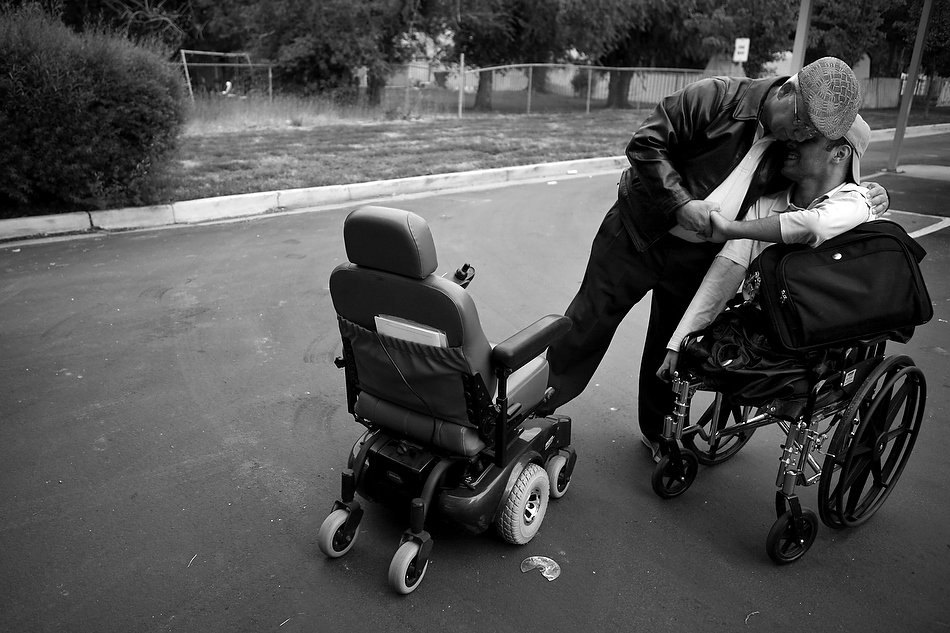
RAMIN:
I have learned that others are stronger than me.
TID:
In conclusion, what advice do you have for photographers?
RAMIN:
My advice is not going to be any different than what they have already heard - at least I hope. I would tell photographers to decide to work on stories based on a strong curiosity. I think having a curiosity about an issue or person that you can devote a lot of yourself and time to will undoubtedly make for great images. But, more importantly, it will make you experience something new and let you just live your life in a new way for a period. These are the most important things for me as photographer and they go hand in hand: telling a good story and experiencing my life in a new way. I always think about how being a photographer provides you a diversity of moments, encounters, and experiences. I think all photographers should realize this and take full advantage of what they are allowed to do and see with a camera.

:::BIO:::
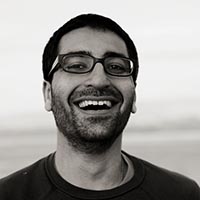
Ramin Rahimian (b. 1981 in Tehran, Iran) is an American freelance documentary and editorial photographer based in Petaluma, California, north of San Francisco. He received his B.A. in political science and international relations from the University of California, Berkeley. There, he worked on the photography staff of the student-run newspaper for four years. After college, he worked for two years as a staff photographer at the Minneapolis Star Tribune newspaper. Since 2006, he has been a freelance photographer working for clients such as The New York Times, The Wall Street Journal, Education Week, and San Francisco Magazine. He was named Utah photographer of the year in 2007, 2008, and 2009. Some of his work has been recognized by POY and NPPA Best of Photojournalism. Ramin lives with his wife Beth Schlanker who is a also a photographer and his toddler daughter Emerson.
You can see more of work here:
Photo story on Diyar: http://www.raminphoto.com/lastmission/
Video on Diyar: https://www.youtube.com/watch?feature=player_embedded&v=2Jw1Hpr1IKU